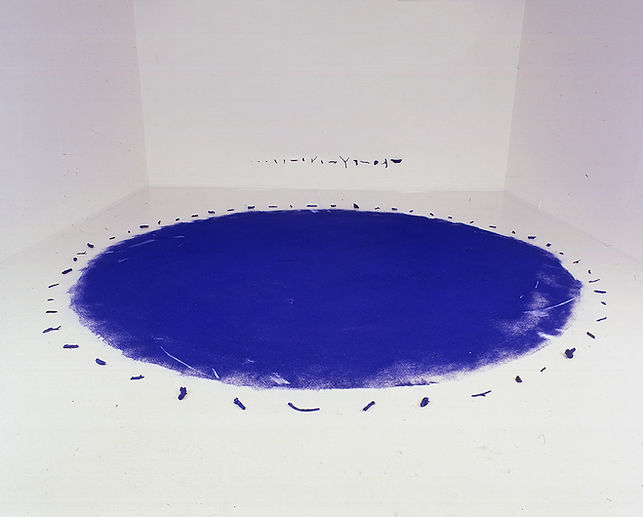Time, Body, and Silence
Sangghil Oh
Time-based artist | Body | Resistance | Trace | Silence
“What cannot be said—must be drawn, screamed, or scattered.”
Objects Adjusted by Sensation
Since the late 1980s,
I have been borrowing objects from nature—branches, roots, soil, bones—to attune them sensorially through composition.
Exploring their raw physicality
and inherent structure,
I expanded the space of the studio—floor, wall, and air—into one unified sensory configuration.
Afterward, the objects were returned to where they had come from.
Some of these works were exhibited,
but most remain as quiet records
of experimentation between space, object
and sensation.
Decades later, a few were reconstructed at the MMCA, and were once again returned to nature.
Untitled, 1989
_edited.jpg)
red brick powder, pigment, animal's bones, branches etc., ⌀ 5m
“I don’t aim to define the world—
I sense an era.
And that sensation begins at the fingertips,
moves through the body,
and grazes along with time.
That’s why I hoped this work would become
a space for resonance and reflection.”
The blue circle in the white cube
was large enough to envelop a human body.
Under intense lighting,
this massive field of color
seemed to rise into the air,
or sometimes pull my body into it.
It was an extraordinary experience.
Untitled, 1989

powder of red brick, animal's bones, branches etc., ⌀ 5m
The cold touch of soil spread low and wide like a body absorbing heat.
The red earth circle was a way of sensing the ground—
not a centered point, but a plane of contact.
Untitled, 1989 / 2020 reinstalled

root, branches, animal bones, etc., ⌀ 3.4 m x 2.6 m (H)

A persimmon tree root, felled in the woods,
was stood upright, surrounded by 64 branches and animal bones.
This became a kind of sensory structure
that called forth the unconscious structure of nature and the world.
An event faced not by the eyes,
but by the body.
Untitled, 1989

root, branches
As with encounters between people,
there are moments
when one forms a bond with objects.
I call these intersections of coincidence
and inevitability.
So it was with this tree root—
and again, with the persimmon tree
I reassembled in 2020.
Some insisted that form determines content.
But I focused instead on the sensations
and vibrations that form often conceals.
Art is not logic,
but a trace of sensation through material,
a response from the visceral body.
Untitled, 1990
.jpg)
hair, paint, branches
A handful of hair is the body.
Placing it upon white paint
was a kind of ritualized allegory.
The accidental encounter of unordered,
unrelated objects
produces rupture and deviation.
With canvas, 1994

wood, copper pipe, acrylic on canvas, 103.9 x 63.8 inch
These objects, having lived separate lives,
carried with them the marks of time.
Perhaps by chance—or perhaps not—
they came together, formed new bonds,
and were reborn as a work.
The rawness of their presence,
and the unfamiliarity that refuses to be grasped, have always fascinated me.
Between those things, I mediate, attune,
and seek new ways of being.
Untitled, 1985
.jpg)
four urinals, for the Independents of Seoul, 1985
This was my first post-graduation work—
a critical response to Marcel Duchamp,
who first opened my eyes to contemporary art, as well as a declaration against the systemic problems of the Korean art world.
It was a return to the origin of the object—
to ask the question again.